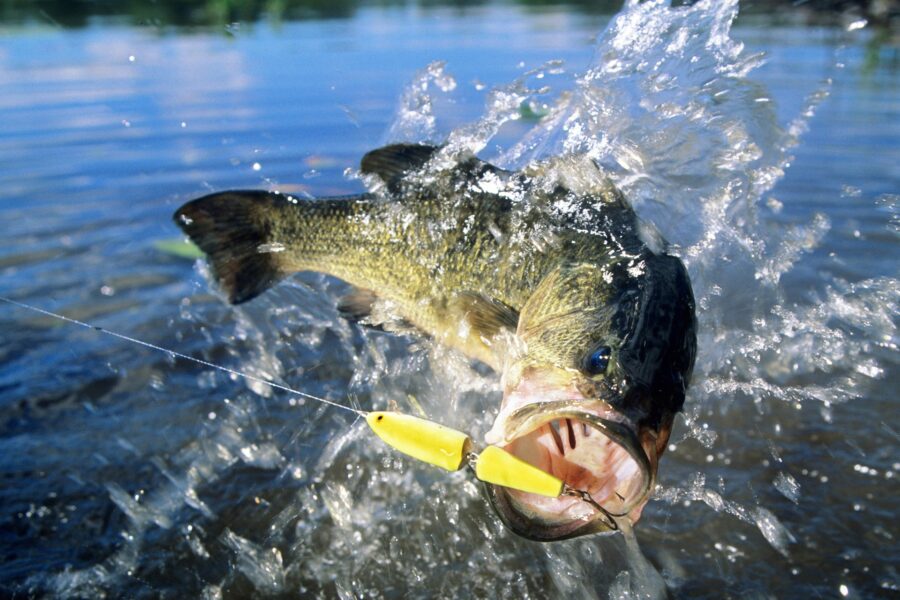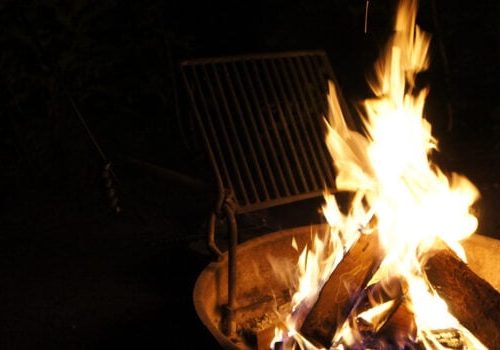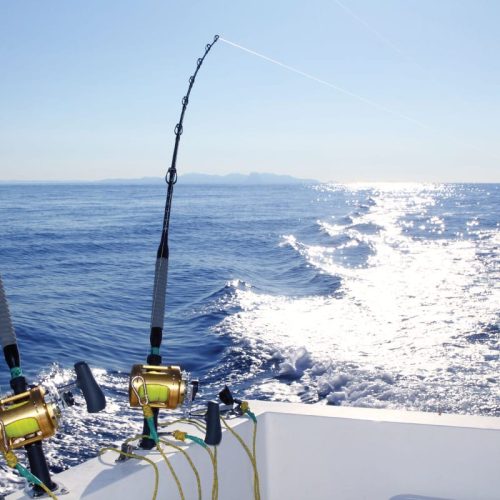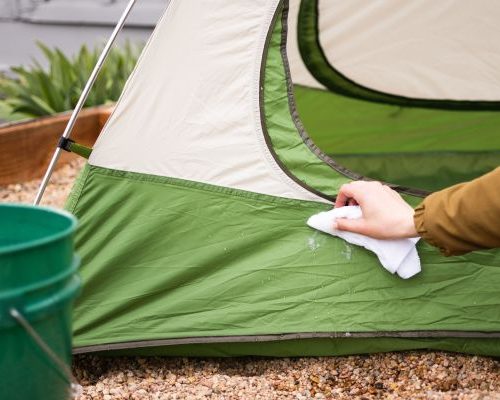Bass fishing is more than just a recreational sport; it’s a passion, a pursuit that connects individuals with nature and challenges their angling skills. Whether you’re a seasoned pro or a novice angler, there’s always room to refine your techniques and learn new strategies. In this comprehensive guide, we’ll delve deep into the world of bass fishing, exploring the nuances, strategies, and equipment needed to land that trophy-sized bass.
Understanding Bass:
The Pursuit of Largemouth and Smallmouth
Bass fishing primarily involves two species: largemouth bass (Micropterus salmoides) and smallmouth bass (Micropterus dolomieu). Before you head out to the water, it’s crucial to understand the differences between these two species.
Largemouth Bass:
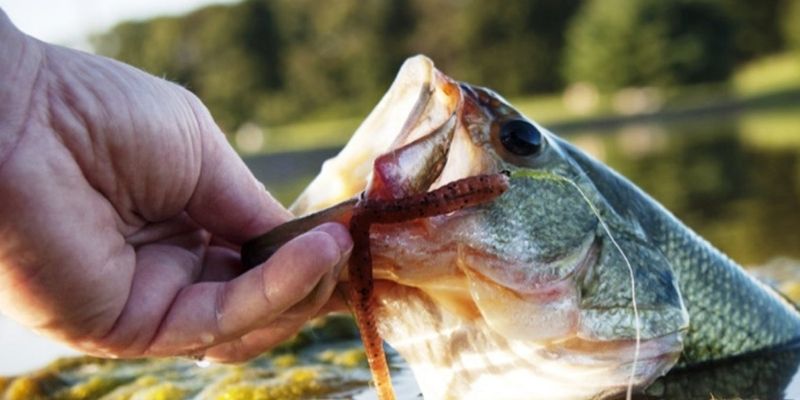
Largemouth bass are renowned for their distinctive jawline, extending past their eyes. They are typically found in slow-moving or still waters, such as ponds, lakes, and rivers with sluggish currents. Largemouth bass are known for their aggressive nature and tendency to strike at various types of bait.
Smallmouth Bass:
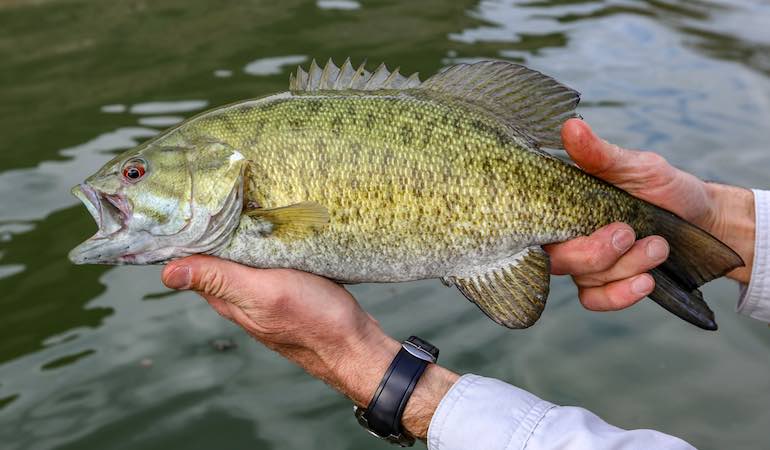
Smallmouth bass, on the other hand, have smaller mouths, and their eyes do not extend as far back as those of largemouth bass. They prefer clear, rocky waters with moderate to swift currents, often inhabiting rivers and streams. Smallmouth bass are prized for their powerful fights and are considered one of the most challenging freshwater species to catch.
Selecting the Right Fishing Gear
Rod and Reel Selection:
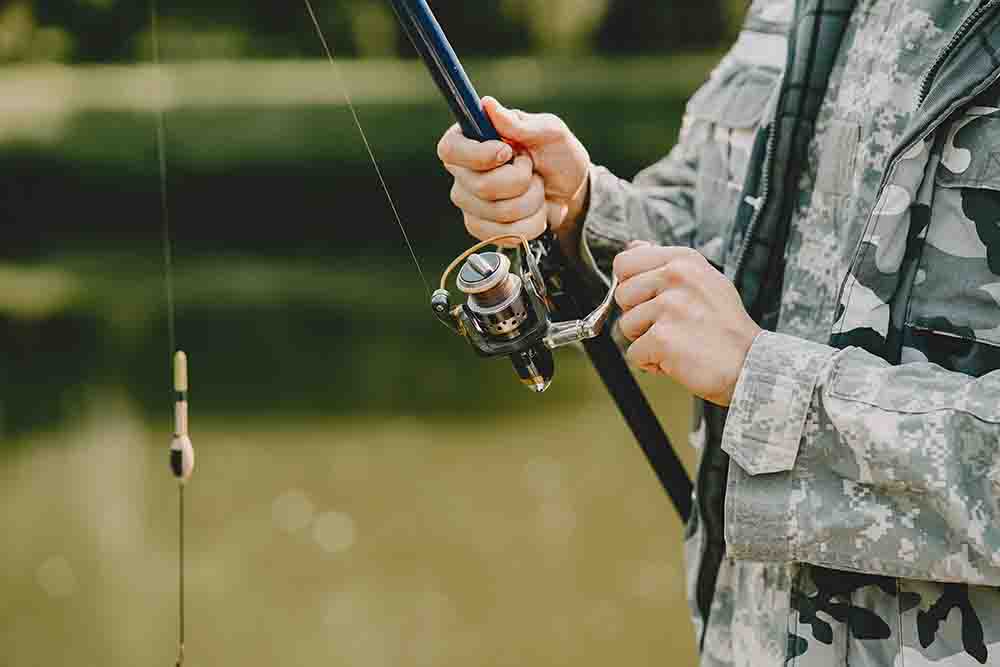
Choosing the right fishing gear is crucial for a successful bass fishing expedition. The selection of your fishing rod and reel should be based on the type of bass you’re targeting and the fishing technique you plan to employ.
For largemouth bass in calm waters, a medium to medium-heavy spinning rod and reel combo is a popular choice. It provides the flexibility needed for various casting techniques, such as flipping, pitching, and casting topwater lures.
For smallmouth bass in swift currents, a baitcasting rod and reel setup with a faster gear ratio is recommended. This setup allows for precise control and casting accuracy when targeting smallmouths hiding among rocks and structures.
Fishing Line Choices:
The choice of fishing line can greatly affect your success in bass fishing. Monofilament, fluorocarbon, and braided lines each have their advantages:
- Monofilament: Offers flexibility and good visibility, making it an excellent choice for beginners. It’s also less visible underwater, increasing your chances of attracting cautious bass.
- Fluorocarbon: Virtually invisible underwater, fluorocarbon is ideal for finesse presentations. It also has minimal stretch, ensuring better sensitivity to bites.
- Braided Line: Known for its strength and minimal stretch, braided line is suitable for heavy cover and thick vegetation where you need to exert more force to pull bass out of hiding.
Essential Tackle:
Beyond the rod and reel, there are several essential tackle items you should have in your bass fishing arsenal:
- Hooks: Choose hooks appropriate to the bait and fishing technique. Offset hooks are popular for soft plastics, while treble hooks work well for crankbaits and jerkbaits.
- Bait: Bass have a varied diet, so your bait selection should reflect that. Popular options include plastic worms, jigs, spinnerbaits, crankbaits, and topwater lures.
- Terminal Tackle: Include items like swivels, sinkers, and bobbers in your tackle box for various fishing scenarios.
Strategies for Bass Fishing Success
Location, Location, Location:
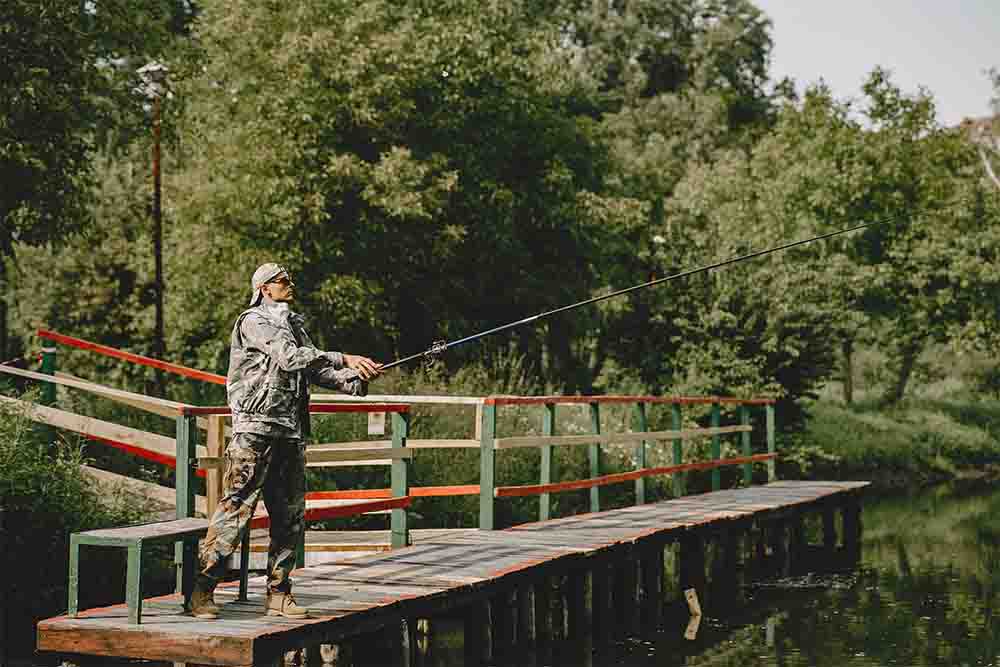
Finding the right fishing spot is often the key to success in bass fishing. Bass are opportunistic predators, so they are drawn to areas with abundant food sources and suitable shelter.
- Vegetation: Bass love to hide in submerged vegetation, such as lily pads, hydrilla, and submerged grass. These areas provide both cover and a habitat for prey.
- Structure: Rocks, fallen trees, and submerged logs offer ideal ambush points for bass. Casting near these structures can lead to big catches.
- Drop-offs and Points: Transition zones between shallow and deep waters are prime locations to find bass, especially during seasonal changes.
- Water Temperature: Bass are temperature-sensitive, so monitor water temperatures and adjust your approach accordingly. They tend to be more active in warmer water.
Time of Day Matters:
Bass are more active during certain times of the day. Early morning and late afternoon are typically the best times for bass fishing, as these coincide with low light conditions. Bass are more likely to be feeding during these periods, making it easier to entice them with your bait.
Use the Right Presentation Techniques:
Different lures and presentations are effective in various situations. Here are some techniques to consider:
- Topwater Lures: Create surface commotion to attract bass, mimicking prey that’s struggling at the surface.
- Crankbaits: Dive to various depths, imitating injured baitfish. Vary your retrieval speed to trigger strikes.
- Soft Plastics: Mimic worms, crawfish, or other prey by using a slow, subtle retrieval technique. This is particularly effective for finesse fishing.
- Jigs: Ideal for fishing around cover, jigs imitate crayfish and other bottom-dwelling prey. Work them slowly and precisely to entice strikes.
Practice Catch and Release:
Conservation plays a crucial role in preserving bass populations for future generations. Practice catch and release whenever possible, especially with larger bass. This helps maintain healthy ecosystems and ensures there are plenty of big bass to catch in the future.
Bass Fishing Tips for All Seasons
Spring Bass Fishing:
Spring is an excellent time to target bass, as they become more active after the winter months. During this season, consider the following tips:
Focus on shallower waters as bass move closer to shore to spawn.
Use spinnerbaits and lipless crankbaits to imitate baitfish, as bass are voracious feeders in the spring.
Pay attention to water temperature changes, as bass are more likely to be active in slightly warmer water.
Summer Bass Fishing:
Summer can be a challenging season for bass fishing due to warmer water temperatures. To increase your chances of success:
Fish during low-light periods, such as early morning or late evening.
Target deeper water where bass seek relief from the heat.
Experiment with different depths and retrieve speeds to find the bass’ preferred feeding pattern.
Fall Bass Fishing:
Fall is often considered the best season for bass fishing. As bass feed voraciously to prepare for winter, follow these guidelines:
Focus on feeding areas like rocky points and drop-offs.
Use lures that mimic baitfish, such as jerkbaits and lipless crankbaits.
Pay attention to changing weather conditions, as bass are sensitive to temperature fluctuations.
Winter Bass Fishing:
Winter bass fishing can be challenging due to cold water temperatures, but it’s not impossible. Here’s how to approach it:
Fish slowly and methodically, as bass are less active in cold water.
Use finesse techniques with soft plastics, as bass are more likely to strike when presented with a subtle and realistic offering.
Target deeper water where the temperature is more stable.
Bass Conservation and Ethical Fishing Practices
As responsible anglers, it’s our duty to preserve the bass populations and the ecosystems they inhabit. Here are some ethical fishing practices to keep in mind:
Respect Catch Limits:
Always adhere to local fishing regulations and catch limits. These regulations are in place to ensure sustainable bass populations.
Handle Fish Carefully:
Minimize stress on the fish by handling them gently. Use barbless hooks to facilitate easier hook removal, and avoid squeezing the fish excessively.
Use Proper Release Techniques:
When practicing catch and release, hold the fish in the water until it’s strong enough to swim away on its own. Avoid releasing fish into warm water during summer months, as this can lead to their mortality.
Dispose of Trash Responsibly:
Pack out all trash, including discarded fishing line and bait containers. Leave the fishing spot cleaner than you found it.
Educate Others:
Promote ethical fishing practices among fellow anglers and educate newcomers on the importance of conservation.
Mastering Bass Fishing: The Do’s and Don’ts for Success
Bass fishing is a thrilling and rewarding sport that requires a combination of skill, knowledge, and respect for the environment. Whether you’re a novice angler or a seasoned pro, adhering to the do’s and don’ts of bass fishing is essential for a successful and sustainable experience. In this article, we will explore the key guidelines that will help you become a more responsible and effective bass angler.
The Do’s of Bass Fishing
Do Research Your Fishing Spot:
Before heading out to the water, take the time to research your chosen fishing location. Learn about the water conditions, topography, and the types of bass present. Local fishing reports, online forums, and maps can provide valuable insights into where and when to fish.
Do Respect Fishing Regulations:
Always abide by fishing regulations and catch limits set by local authorities. Regulations are designed to protect fish populations and the ecosystem. Ignoring them can result in fines and harm to fish populations.
Do Use Proper Fishing Gear:
Select the right fishing gear for the specific conditions and type of bass you’re targeting. Match your rod, reel, line, and lures to the fishing environment. This ensures better control and increases your chances of success.
Do Practice Ethical Catch and Release:
Catch and release is a responsible practice that helps maintain healthy bass populations. Handle fish with care, use proper release techniques, and minimize their time out of the water. Ensure the fish is strong enough to swim away before releasing it.
Do Employ Proper Knots:
Use reliable and appropriate knots to secure your lures or bait to your line. Knot strength is crucial when battling a strong bass, as a poorly tied knot can lead to lost fish.
Do Pay Attention to Weather and Seasonal Patterns:
Understand how weather conditions and seasonal changes affect bass behavior. Fish are more active during specific times of the day and year. Adjust your techniques and location accordingly.
Do Be Patient and Persistent:
Bass fishing often requires patience. Fish may not bite immediately, so be persistent and experiment with different lures, presentations, and depths. Stay focused, and your efforts will likely pay off.
Do Stay Quiet and Stealthy:
Bass are known for their acute senses, especially their hearing. Be quiet and avoid making unnecessary noise, such as slamming hatches or talking loudly. Move your boat or approach fishing spots quietly to avoid spooking the fish.
Do Handle Fish Gently:
Handle caught fish with care to minimize stress and injury. Wet your hands before touching the fish to protect their slime coat, which serves as a protective barrier. Avoid squeezing fish excessively, and always support their body weight.
Do Practice Conservation:
Take the initiative to clean up after yourself and others. Dispose of trash properly, including discarded fishing line and bait containers. Leave the fishing spot cleaner than you found it to protect the environment.
The Don’ts of Bass Fishing
Don’t Overfish:
Resist the urge to overfish or exceed catch limits. Overfishing can lead to declining bass populations and negatively impact the balance of the ecosystem.
Don’t Ignore Local Regulations:
Ignoring fishing regulations can result in legal consequences and harm fish populations. Always familiarize yourself with and follow local fishing rules and guidelines.
Don’t Use Live Bait in Restricted Areas:
Some waters have restrictions on using live bait to prevent the introduction of invasive species. Always adhere to these regulations to protect the local ecosystem.
Don’t Keep Undersized Fish:
Release undersized bass immediately to ensure their continued growth and contribution to the population. Keep only fish that meet legal size requirements.
Don’t Dispose of Fishing Line Improperly:
Fishing line is harmful to wildlife and the environment if not disposed of correctly. Do not discard it in the water or on the shore. Instead, collect it and dispose of it properly in designated containers.
Don’t Leave Lures Behind:
If your lures become snagged or lost, make an effort to retrieve them rather than leaving them in the water. Lost lures can pose hazards to other anglers and wildlife.
Don’t Fish in Closed Seasons:
Respect closed seasons when certain types of fishing may be prohibited to protect spawning fish populations. Ignoring closed seasons can harm the bass population and result in penalties.
Don’t Keep More Than You Need:
Avoid taking more fish than you can reasonably use. Keeping fish for the sake of it can lead to waste and overharvesting.
Don’t Disturb Nesting Fish:
During the spawning season, avoid disturbing nesting bass. These fish are highly vulnerable, and excessive disturbance can lead to abandoned nests and decreased recruitment.
Don’t Use Unapproved Substances:
Avoid using any illegal or environmentally harmful substances in your fishing activities, such as chemicals or explosives. These practices can have severe ecological consequences.
Final Words
Bass fishing is an art form that requires skill, patience, and a deep appreciation for nature. With the right gear, strategies, and ethical approach, you can embark on an exciting journey to catch the big one. Remember to always prioritize the well-being of the fish and their habitat, ensuring that future generations can enjoy the thrill of bass fishing as well. So, grab your gear, find that perfect spot, and get ready to reel in the bass of your dreams.
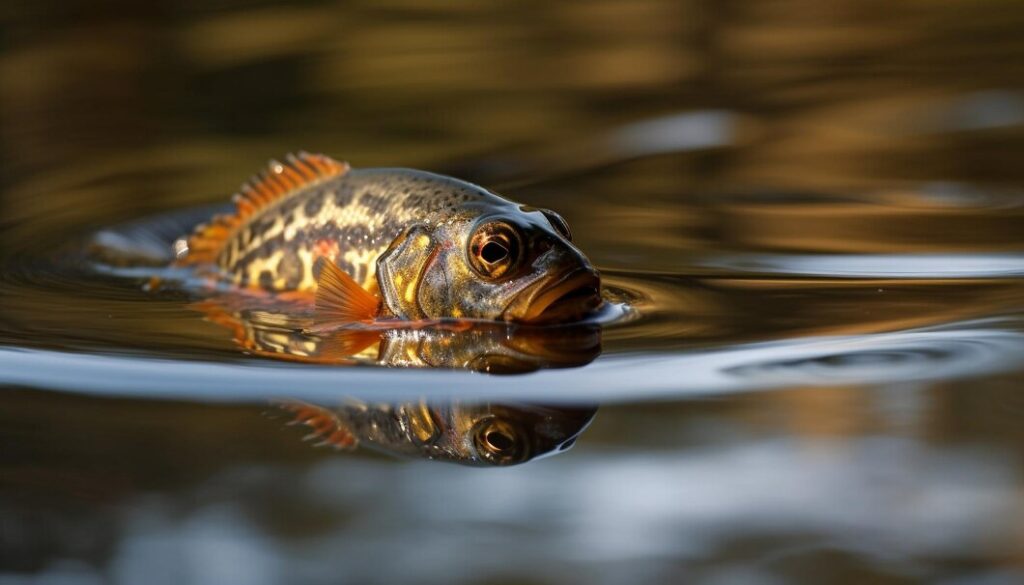
Bass fishing is not only a thrilling sport but also a responsibility that comes with the duty to protect and conserve bass populations and their habitats. By following the do’s and don’ts of bass fishing, you can enjoy a successful and sustainable angling experience while contributing to the preservation of these magnificent fish for future generations to enjoy. Responsible anglers play a crucial role in maintaining the balance of our aquatic ecosystems, ensuring that bass continue to thrive in the waters we love to explore. Happy fishing!
